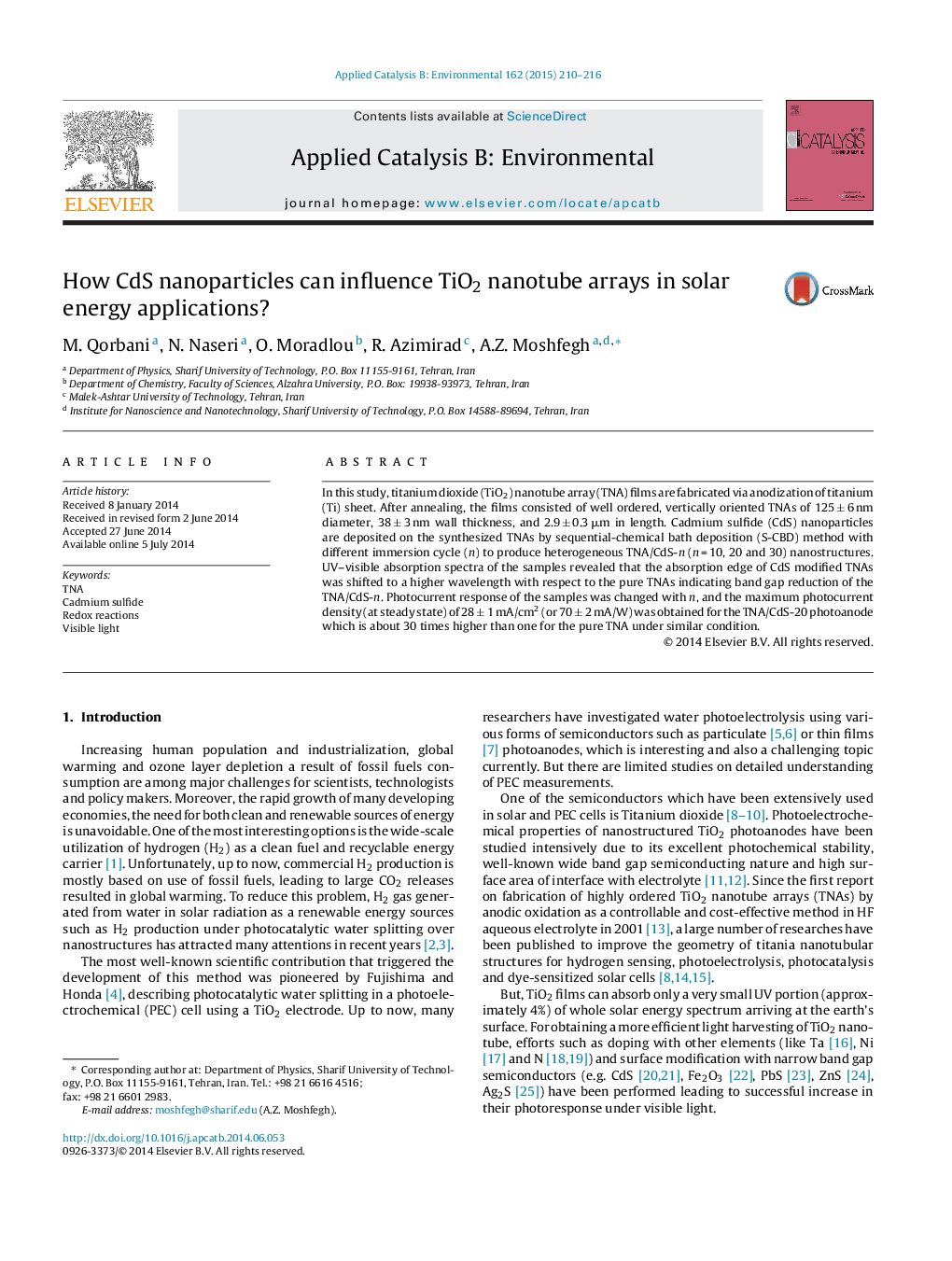| کد مقاله | کد نشریه | سال انتشار | مقاله انگلیسی | نسخه تمام متن |
|---|---|---|---|---|
| 45639 | 46418 | 2015 | 7 صفحه PDF | دانلود رایگان |

• CdS nanoparticles were deposited on pure TNA by S-CBD method with different cycles.
• X-ray diffractometery was indicated that fabricated TNAs were in anatase phase.
• The optimum cycle for CdS deposition showed the best photocurrent of 28 mA/cm2.
• The best PEC performance was attributed to 20 CdS immersion cycles.
• A mechanism for obtaining optimum loading of CdS has been suggested significantly.
In this study, titanium dioxide (TiO2) nanotube array (TNA) films are fabricated via anodization of titanium (Ti) sheet. After annealing, the films consisted of well ordered, vertically oriented TNAs of 125 ± 6 nm diameter, 38 ± 3 nm wall thickness, and 2.9 ± 0.3 μm in length. Cadmium sulfide (CdS) nanoparticles are deposited on the synthesized TNAs by sequential-chemical bath deposition (S-CBD) method with different immersion cycle (n) to produce heterogeneous TNA/CdS-n (n = 10, 20 and 30) nanostructures. UV–visible absorption spectra of the samples revealed that the absorption edge of CdS modified TNAs was shifted to a higher wavelength with respect to the pure TNAs indicating band gap reduction of the TNA/CdS-n. Photocurrent response of the samples was changed with n, and the maximum photocurrent density (at steady state) of 28 ± 1 mA/cm2 (or 70 ± 2 mA/W) was obtained for the TNA/CdS-20 photoanode which is about 30 times higher than one for the pure TNA under similar condition.
Figure optionsDownload as PowerPoint slide
Journal: Applied Catalysis B: Environmental - Volume 162, January 2015, Pages 210–216